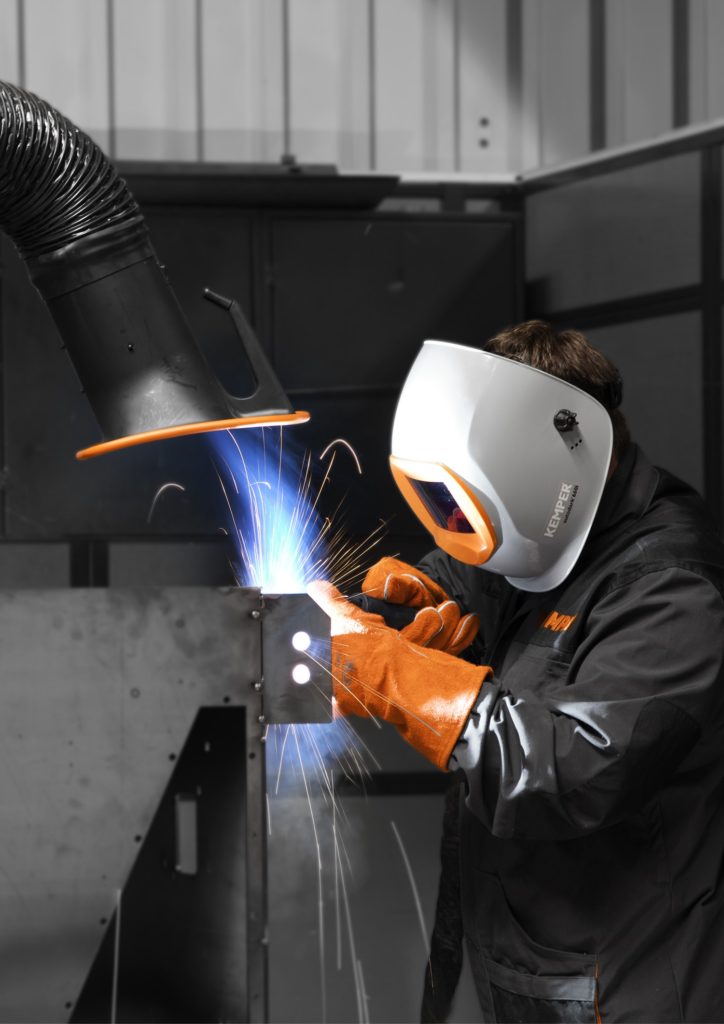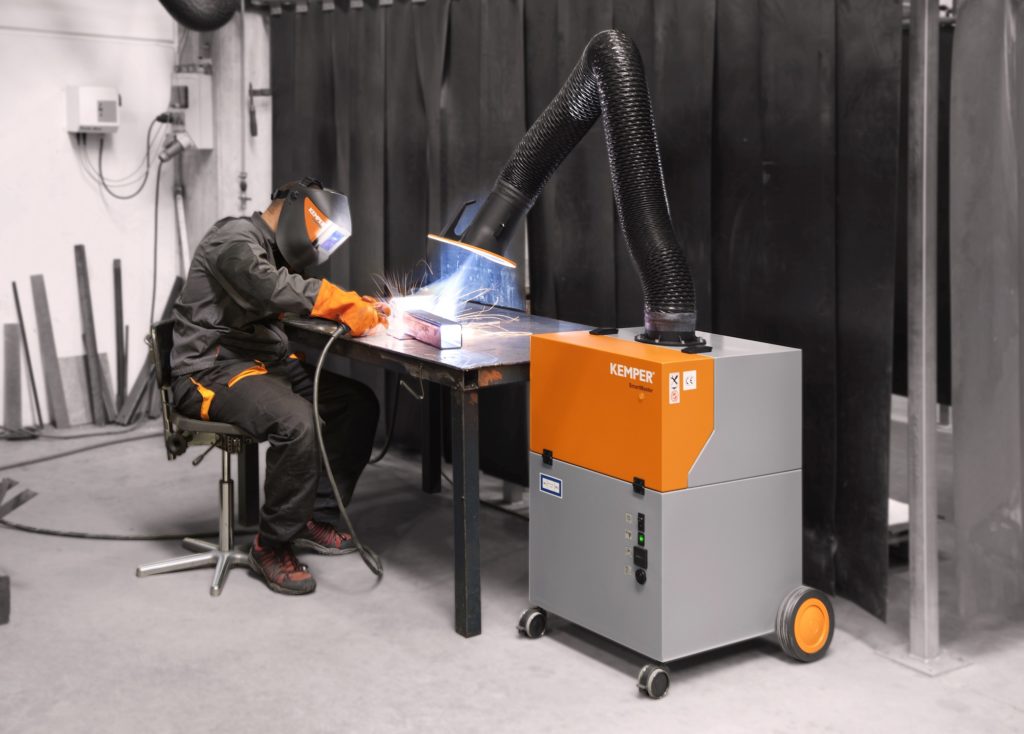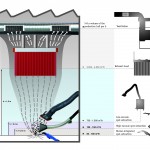British occupational health and safety authority states: “Local exhaust ventilation is essential for all welding activities indoors”
The discussion on dealing with welding fume hazards is ongoing worldwide. The example of the British occupational health and safety authority HSE shows how the rules are becoming stricter. In an interview, Mrs Sarah Palfreyman, HM Inspector of Health and Safety, explains the background to the reclassification of mild steel welding fume as a carcinogen.
Toxic fumes and gases, UV radiation as well as noise and temperature hazards: welders are more exposed to biological, chemical, and ergonomic risk factors than workers in other industries. The significance of occ upational health and safety regulations have long been recognized in the UK where the Health and Safety Executive (HSE) functions as a national regulator and government agency. One of the outstanding topics in 2019 was the reclassification of welding fumes which led to a strengthening in enforcement expectations for mild steel welding fume. At safe-welding.com, we talked with Mrs Sarah Palfreyman from HSE about their motives and the effects of these new regulations.
Since February 2019 HSE changed its enforcement expectations for mild steel welding fume. Is welding fume becoming more and more dangerous??
No, welding has always been hazardous. However, the scientific findings are becoming more and more precise. A study conducted in 2018 by the International Agency for Research on Cancer concluded in their monograph that mild steel welding fume was a human carcinogen and could lead to the development of lung cancer and potentially kidney cancer to those who are exposed. Accordingly, the Workplace Health Expert Committee has endorsed the reclassification of mild steel welding fume as a human carcinogen that can cause serious and permanent health injuries. With immediate effect, we changed our enforcement expectation for all welding fume, including mild steel welding, because general ventilation alone does not achieve the necessary control.
The most important function of HSE is to ensure occupational health and safety for workers in the UK. What problems are you facing in companies who undertake welding activities in particular?
Workers who perform welding activities are exposed to an enormous health risk because welding fume includes irritating gases such as oxides of nitrogen and ozone. This can not only cause respiratory irritation and metal fume fever but can also increase susceptibility to pneumonia. In the longer term, it can even lead to serious lung diseases including occupational asthma and cancer. There is also evidence linked to kidney cancer and chronic obstructive pulmonary disease. As an executive it is our duty to protect worker’s health in the metalworking industry through suitable regulations.
The major changes HSE made are the expected control measures you want to see as well as the enforcement actions you may take against companies who are not controlling risks effectively. Which requirements do you have that guarentee occupational health and safety in comapnies?
On the part of HSE, there is now a requirement to provide suitable control measures for welding mild steel, such as the proper use of local exhaust ventilation to remove the fume at source and the use of suitable respiratory protection where there is residual fume or where the provision of local exhaust ventilation is not possible.
What exactly does that mean? What is being investigated in companies concerning metal fume and mild steel welding fume in particular?
As part of general inspections an HSE inspector would assess how companies are controlling their employee’s exposure to mild steel welding fume or any other metal fume. We follow up on the questions: Have they assessed the risks from fume within their workplace? What control measures have been put in place? Is there any obvious visible fume? What knowledge do the employees have of the risks and, what training have they been given on how to correctly use control measures?
These are many questions and details that employers must pay attention to. Which standards should employers who undertake welding activities have?
HSE will no longer accept any welding undertaken without suitable exposure control measures. With regards to worker’s health employers should be meeting the requirements of the Control of Substances to Health Regulations (COSHH). It requires them to ensure that exposure is prevented or, where this is not reasonably practicable, adequately controlled. As a guidance the COSHH regulation gives practical advice on how this can be achieved through the control hierarchy.
That sounds complex. Within the control hierarchy, what should employers be particularly aware of?
Engineering controls such as local exhaust ventilation is the highest level required for all welding activities indoors where you cannot eliminate or substitute welding fume. Where Local exhaust ventilation (LEV) alone does not adequately control exposure, it should be supplemented by adequate and suitable respiratory protective equipment (RPE) to protect against the residual fume. Where LEV is not reasonably practicable RPE should be used indoors. Appropriate RPE should be provided for welding outdoors. You should also ensure welders are suitably instructed and trained in the use of these controls.
Are employers or welders complying with the rules or are they rather neglecting them?
The manufacturing sector responded positively to the new requirement to control exposure to mild steel welding fume. The focused effort undertaken by HSE to positively move to explain about and encourage awareness of the reclassification of welding fume as a human carcinogen was a big factor in industry achieving good levels of compliance.
 As one of the safest and best places to work and do business, the United Kingdom sets a good example for other markets. Do you think that HSE should be considered as a role model?
As one of the safest and best places to work and do business, the United Kingdom sets a good example for other markets. Do you think that HSE should be considered as a role model?
HSE made this change based upon the scientific evidence and risk posed to workers. As a regulator, we use a wide variety of methods to encourage and support business to manage health and safety risks in a sensible and proportionate way and secure compliance with the law. It is our policy that all enforcement action should be proportionate to the health and safety risks and to the seriousness of any breach of law. We work with other markets both bilaterally and through multilateral institutions and would be happy to work with others on this topic, too.
HSE Info box
| Name | Health & Safety Executive (HSE) |
| Formed | 1st January 1975 |
| Headquarters | Bootle, Merseyside, England |
| Function | National regulator and government agency for workplace health and safety in the UK |
| Purpose | To provide free advice, guidance, news, templates, tools, legislation, and publications for employers as well as employees |
| Mission | To prevent work-related death and injury and contribute to a fairer society |
| Tasks | Giving employers confidence to manage risks correctly, targeting industries with the greatest hazards, using legal powers to do inspections and investigate serious risks, holding employers for account for their failures, getting answers for victims, making workplaces safer |
| Website | www.hse.gov.uk |






